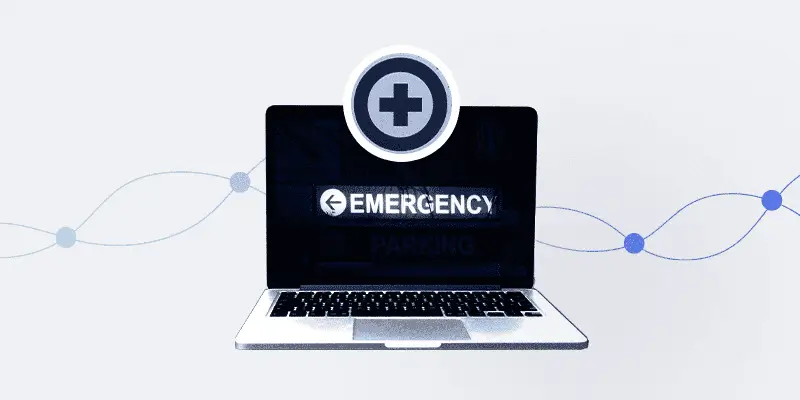Your Salesforce data impacts every aspect of your business; it contains sensitive information relating to your customers and coworkers, it dictates the effectiveness of new updates and applications, and it impacts the success of your data security strategy.
So what happens when a data loss event occurs—either from an accident or malicious act?
Salesforce data recovery is how you get back on track after experiencing a data loss event. An inability to do this leaves your company without the data and metadata that is essential to daily functions. It also puts you at risk of failing to adhere to regulatory requirements for handling sensitive data.
But not all Salesforce data recovery strategies are the same. An inefficient or incomplete recovery plan will still leave your team without necessary information. This leads to redundant work by team members as they attempt to get your system back to baseline.
Prolonged periods between a data loss event and a return to normal operations create massive losses for the affected company.
A proper Salesforce data recovery strategy will help avoid this. But how do you implement a system that provides the greatest returns possible?

Here are 5 things you can do to optimize your Salesforce data recovery efforts:
1. Automate Frequent, Recurring Backups
Salesforce data recovery isn’t going to do your company any good if you don’t have a reliable and recent backup repository to pull from. There must be a continually updated source of backup information to minimize the gulf between the active data in your system and what is available to be restored.
A powerful data backup tool should be automated to take snapshots of your Salesforce environment at repeated intervals.
The frequency of these backups will depend on your particular needs. At a minimum, take a snapshot of your system once a week. Performing these backups daily would be even better, and multiple times a day would be ideal.
There are a series of configurations that can be personalized to your particular needs. For instance, the specific sets of data and metadata that are to be included in your backup snapshots, as well as the retention period for each of these backups.
2. Analyze Your Needs and Implement the Correct Type of Backup
Data recovery can be dictated by your specific needs. Every company is going to have different requirements for what they need to address immediately after a data loss event. The two main metrics that will dictate the breadth and frequency of your Salesforce data recovery strategy are your Recovery Point Objective (RPO) and your Recovery Time Objective (RTO).

RPO and RTO will help align your efforts toward a specified goal that best suits your company after a data loss event.
Your Recovery Point Objective relates to the maximum period of data you are willing to lose from your system after a data loss event. A shorter RPO will necessitate a higher frequency of backups, which will in turn require more storage capacity. Longer RPOs are more affordable but put you at risk for losing more data.
A Recovery Time Objective refers to how quickly you can recover from the moment of a data loss event to the moment you are able to return to normal operations. A shorter RTO saves you money by minimizing lost downtime but will cost more to keep up.
3. Include Metadata in Your Salesforce Data Recovery Strategy
It can be easy to overlook metadata when you are in the process of rebuilding your system after a data loss event. But you are going to have difficulties returning functionality to the way it was before if you don’t include metadata in your recovery strategy.
Metadata has a direct impact on many aspects of your Salesforce environment and failing to back it up will leave your team with redundant work.
Re-working previously addressed aspects of your system is a drain on your team members’ productivity as well as your ROI. Save your team the hassle by including metadata in your backup and recovery efforts.
And for some industries, proper handling of metadata will be included within regulatory requirements. Failing to adhere to these requirements leaves your company vulnerable to potential fines and penalties. Salesforce data recovery also needs to address your system’s metadata.

4. Archive Unused Data
The breadth of the data you backup and eventually recover will have an impact on how quickly and easily you can perform these functions. And much like how many of our closets at home house clothing we haven’t worn for a long time, many Salesforce environments contain outdated and unused data.
Data archiving is the process of identifying unused data, moving it out of the production system, and storing it in long term storage.
Archiving unused data makes it easier for your Salesforce data backup and recovery tool to perform its functions because it doesn’t have to waste time with unnecessary information.
Data backups and archiving can occasionally become confused, but they are very different. Backups are a copy of essential data that does not affect the original files. Archives serve as data repositories for information that isn’t critical but must be retained. The absence of this information doesn’t impact normal operations—it actually makes it better.
5. Utilize a Reliable Backup + Recovery Tool
All Salesforce data recovery tools are not created equal. Finding a single tool that has the ability to backup and restore system data—along with archiving, replicating, and other functionalities—will provide the greatest return for your company.
A reliable and reputable Salesforce data recovery tool can be the difference between quickly returning to operations after a data disaster and experience long term negative effects.
A quality backup and recovery tool will help protect your Salesforce environment when the worst-case scenario strikes. It will also help you remain in accordance with applicable government regulations relating to handling of sensitive information.
Data backup and recovery tools are an aspect of a fully optimized DevSecOps pipeline. Combining the power of these tools with others like static code analysis, continuous integration, and continuous delivery/deployment will create a streamlined operation that is secure and profitable.
